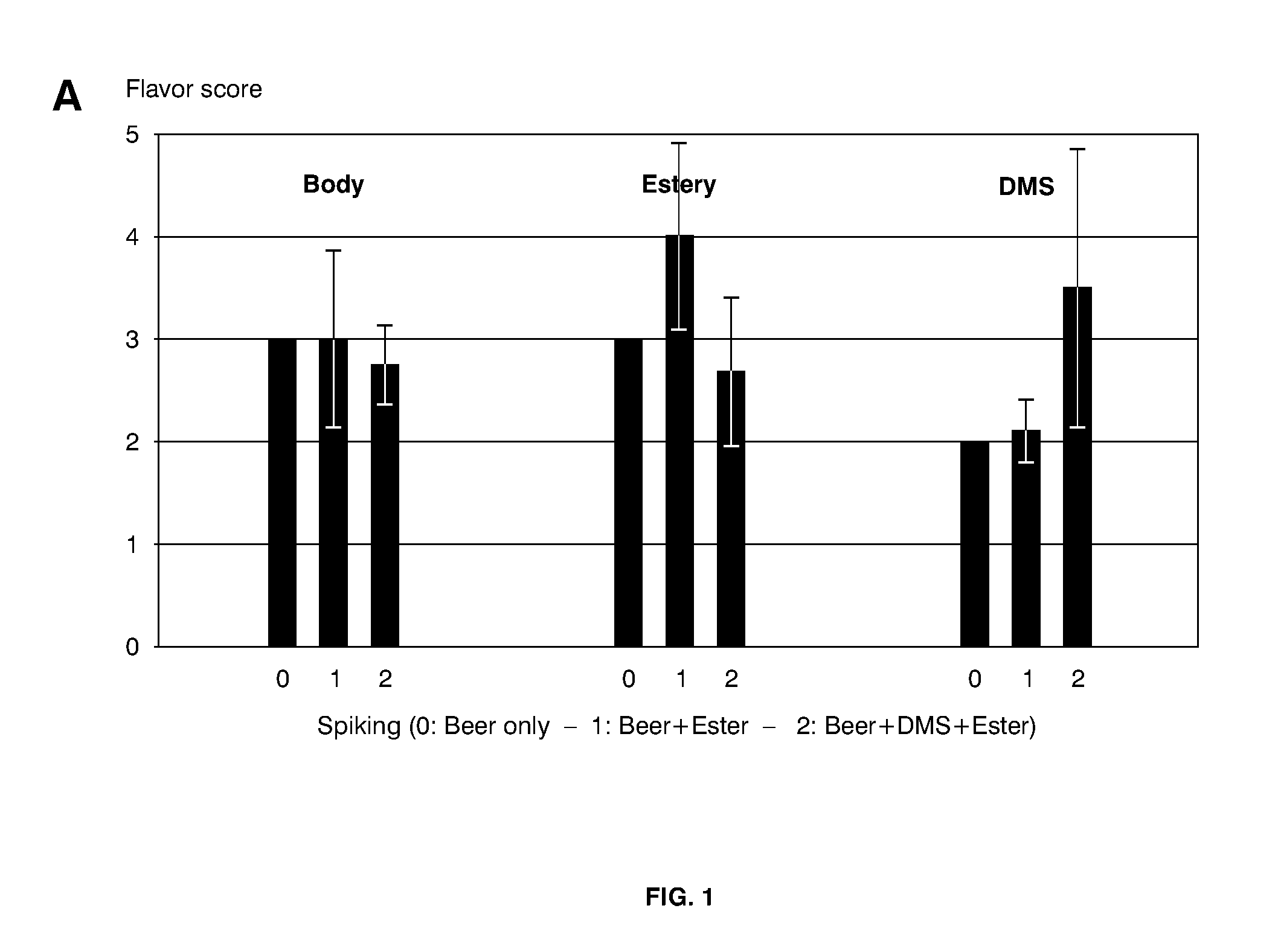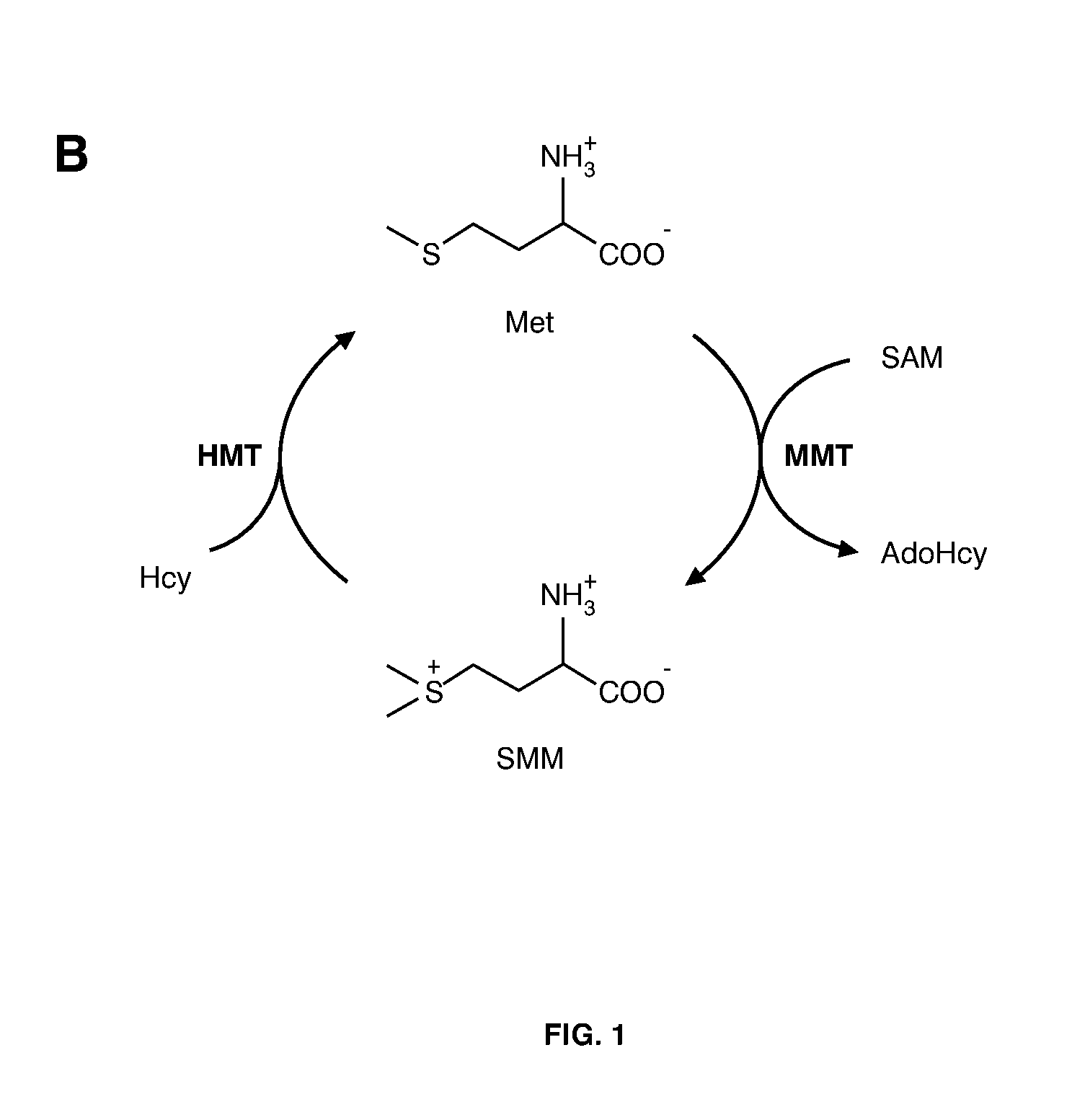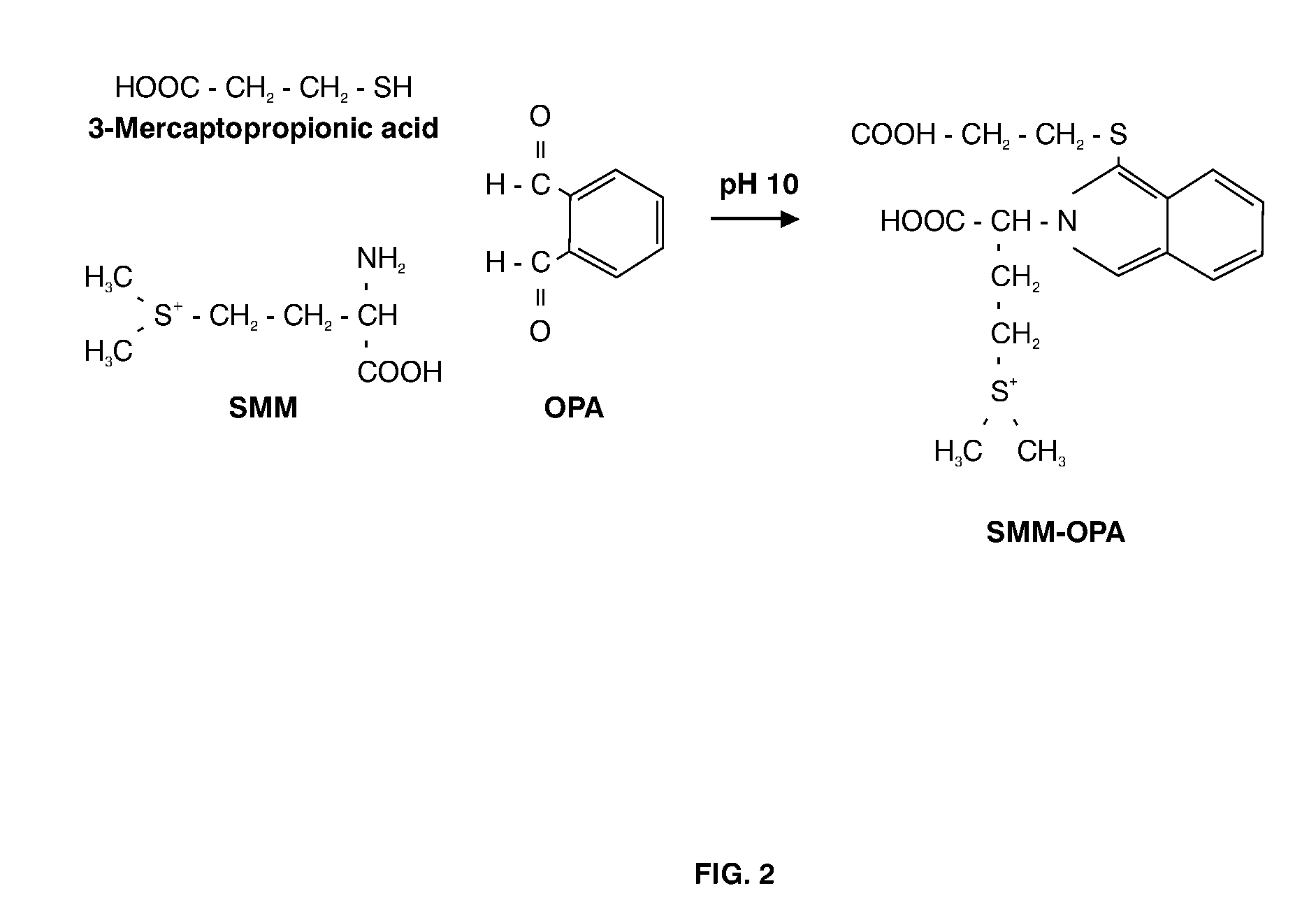Barley and malt-derived beverages with low dms level
a technology of barley and malt, which is applied in the field of barley-derived beverages to achieve the effects of reducing the time span of heating steps, reducing energy consumption, and reducing the temperature in heating steps
- Summary
- Abstract
- Description
- Claims
- Application Information
AI Technical Summary
Benefits of technology
Problems solved by technology
Method used
Image
Examples
example 1
DMS Masks the Estery Taste of Beer
[0250]Characterization of sulfur-like flavor notes is generally considered difficult, even among general beer panel tasters. Often, the beer taste panelist uses the generic term “sulfury” rather than the more specialized sulfury notes—e.g. “mercaptan”, “hydrogen sulfide” and “DMS”—to characterize a sulfury note.
[0251]Following establishment of a 9-taster-large panel, members were extensively trained in tracing the aroma of sulfur-containing components, surprisingly revealing that the addition of sulfur components strongly affect the perception of other aroma components, a property leading to lower scores for e.g. estery taste and body of beer.
[0252]In another set of experiments, DMS was chosen for training the panel. Beer samples, spiked with high concentrations of said sulfur-containing components, were presented to the panel, who were asked to taste and rank the characteristics “body”, “estery”, and “DMS”, on a scale from 0 (absent) to 5 (extreme)...
example 2
Screening Set-Up, Approach 1
[0256]Kernels collected from barley plants of cv. Prestige and cv. Sebastian were incubated separately with the mutagen NaN3, following the experimental details provided by Kleinhofs et al. (1978). This procedure was chosen because of its known potential for inducing point mutations in the barley genomic DNA.
[0257]In the experiments, mutated grains of generation M1 were propagated in field plots through two subsequent generations, eventually yielding a high proportion of homozygous plants of generation M3 for screening purposes. Mutated grains of generation M3 were expected to contain gene mutations at a frequency of 0.9-2.3 per 10,000 grains (Kleinhofs et al., supra). It is notable that M2 grains were not screened.
[0258]Interestingly, the present invention describes a rapid high-throughput screening procedure for detection of M3 mutant barley grains lacking MMT activity, providing lack of detectable SMM synthesis during malting. Thus, applicants found th...
example 3
Potential Mutants
[0262]A total of 10,248 and 3,858 NaN3-mutated kernels of barley cv. Prestige and cv. Sebastian, respectively, were screened for SMM content (cf. approach 1 in Example 2), with the aim to identify those highly reduced in said content when compared with wild-type grains. Only 2 potential mutants of the M3 generation were identified, namely grains of sample no. 8,063 (derived from cv. Prestige, and hereinafter denoted Mutant 8063, a designation also used for grains of subsequent generations; FIG. 3B), and grains of sample no. 14,018 (derived from cv. Sebastian, and hereinafter denoted Mutant 14018, a designation also used for grains of subsequent generations; illustrated in FIG. 3B). Grains of each mutant were propagated to the M4 generation, then harvested, and eventually re-analyzed. The result verified that grains of Mutant 8063 and Mutant 14018 had extremely low SMM contents, possibly totally lacking SMM.
[0263]In a separate experiment, western blot analysis was us...
PUM
| Property | Measurement | Unit |
|---|---|---|
| sensory threshold | aaaaa | aaaaa |
| boiling point | aaaaa | aaaaa |
| temperatures | aaaaa | aaaaa |
Abstract
Description
Claims
Application Information
 Login to View More
Login to View More - R&D
- Intellectual Property
- Life Sciences
- Materials
- Tech Scout
- Unparalleled Data Quality
- Higher Quality Content
- 60% Fewer Hallucinations
Browse by: Latest US Patents, China's latest patents, Technical Efficacy Thesaurus, Application Domain, Technology Topic, Popular Technical Reports.
© 2025 PatSnap. All rights reserved.Legal|Privacy policy|Modern Slavery Act Transparency Statement|Sitemap|About US| Contact US: help@patsnap.com



